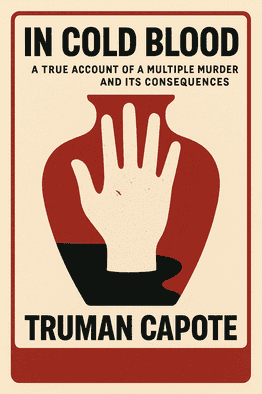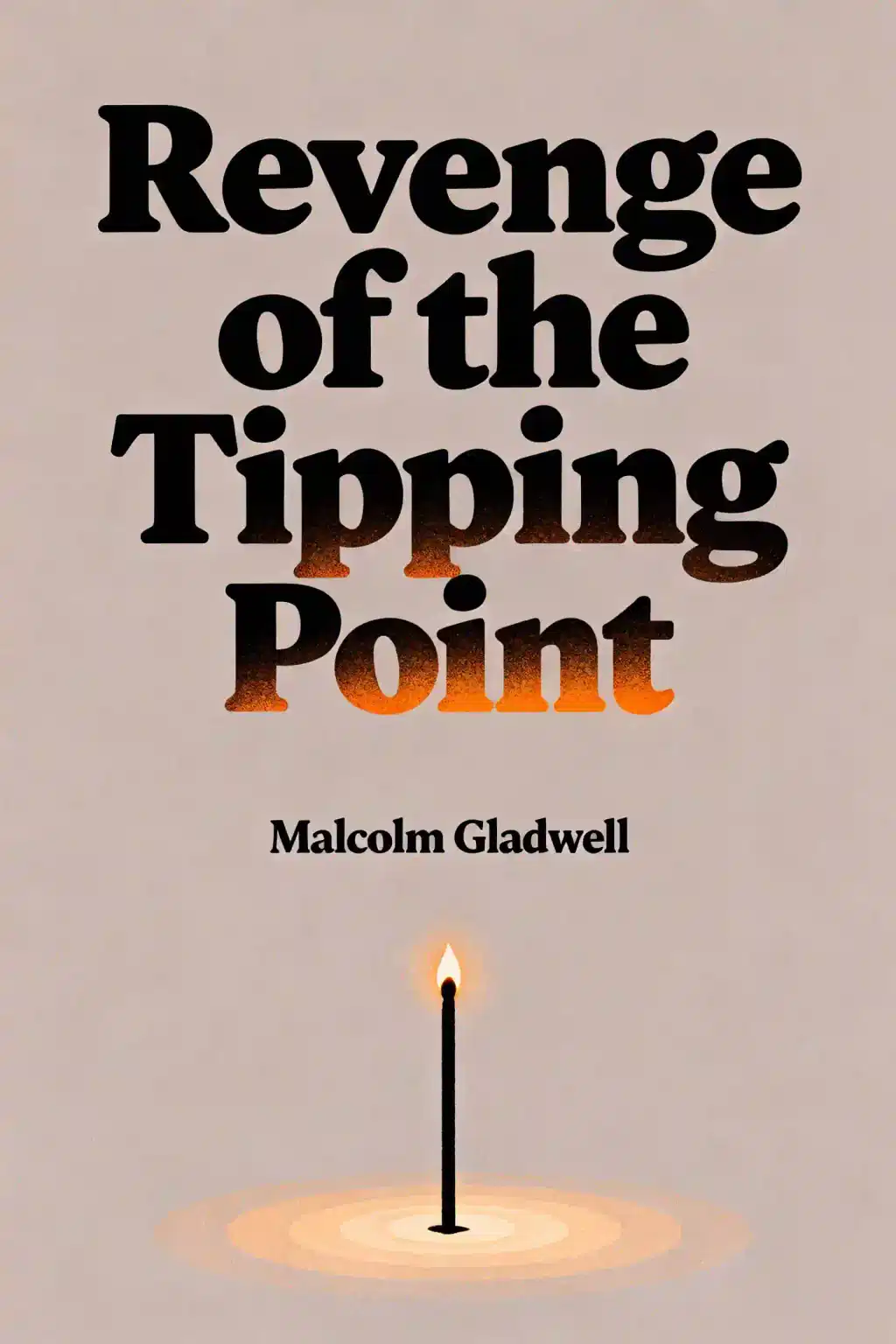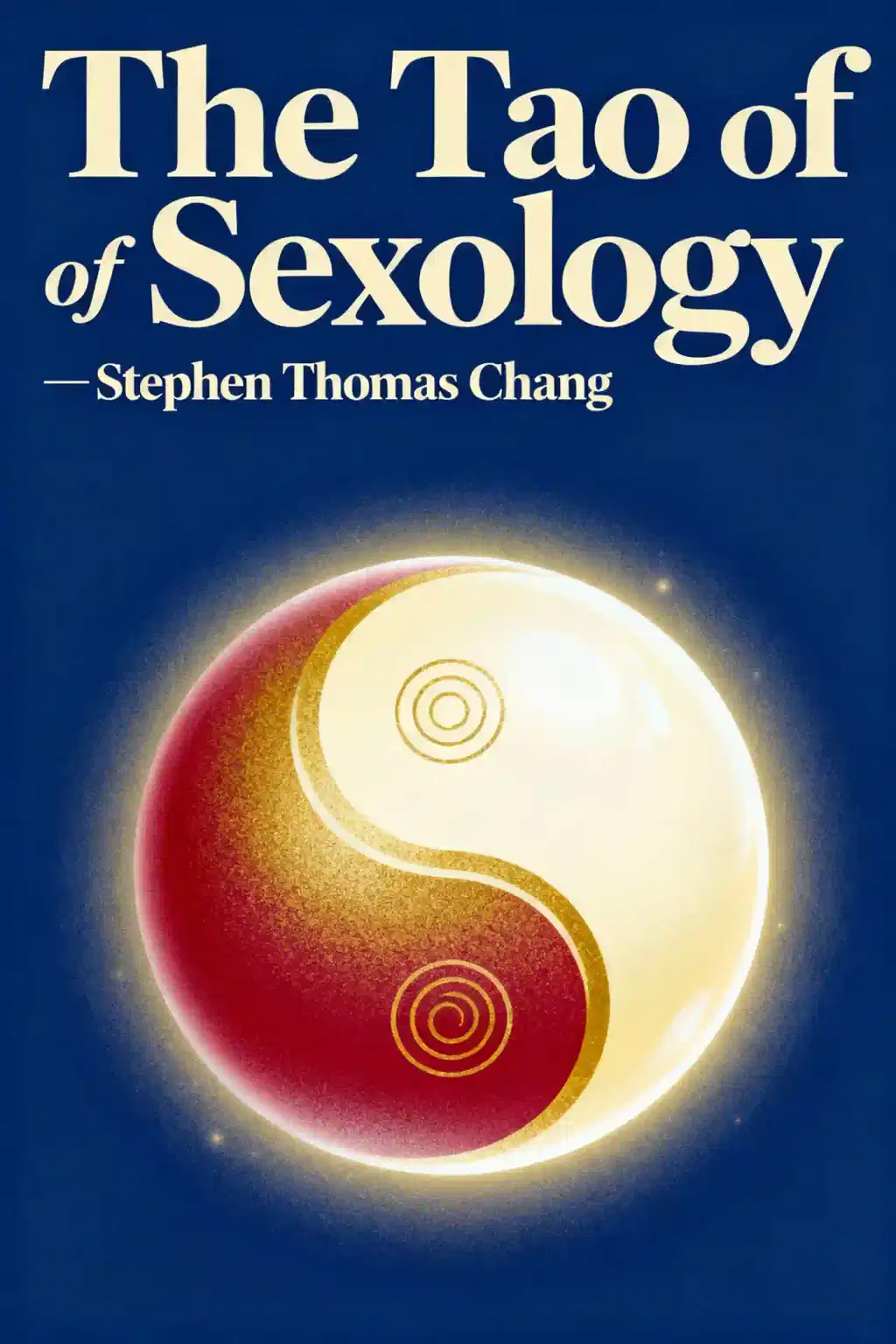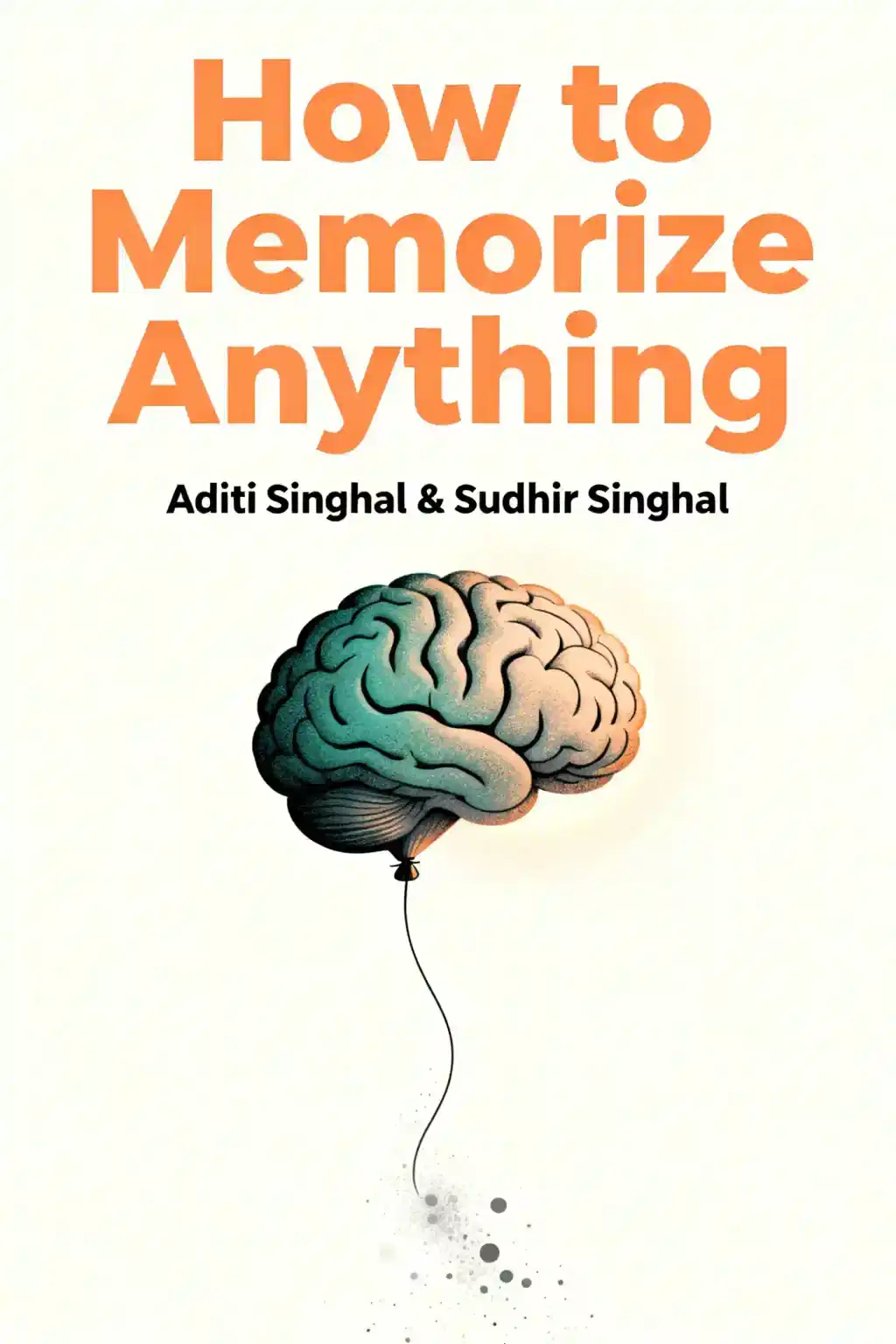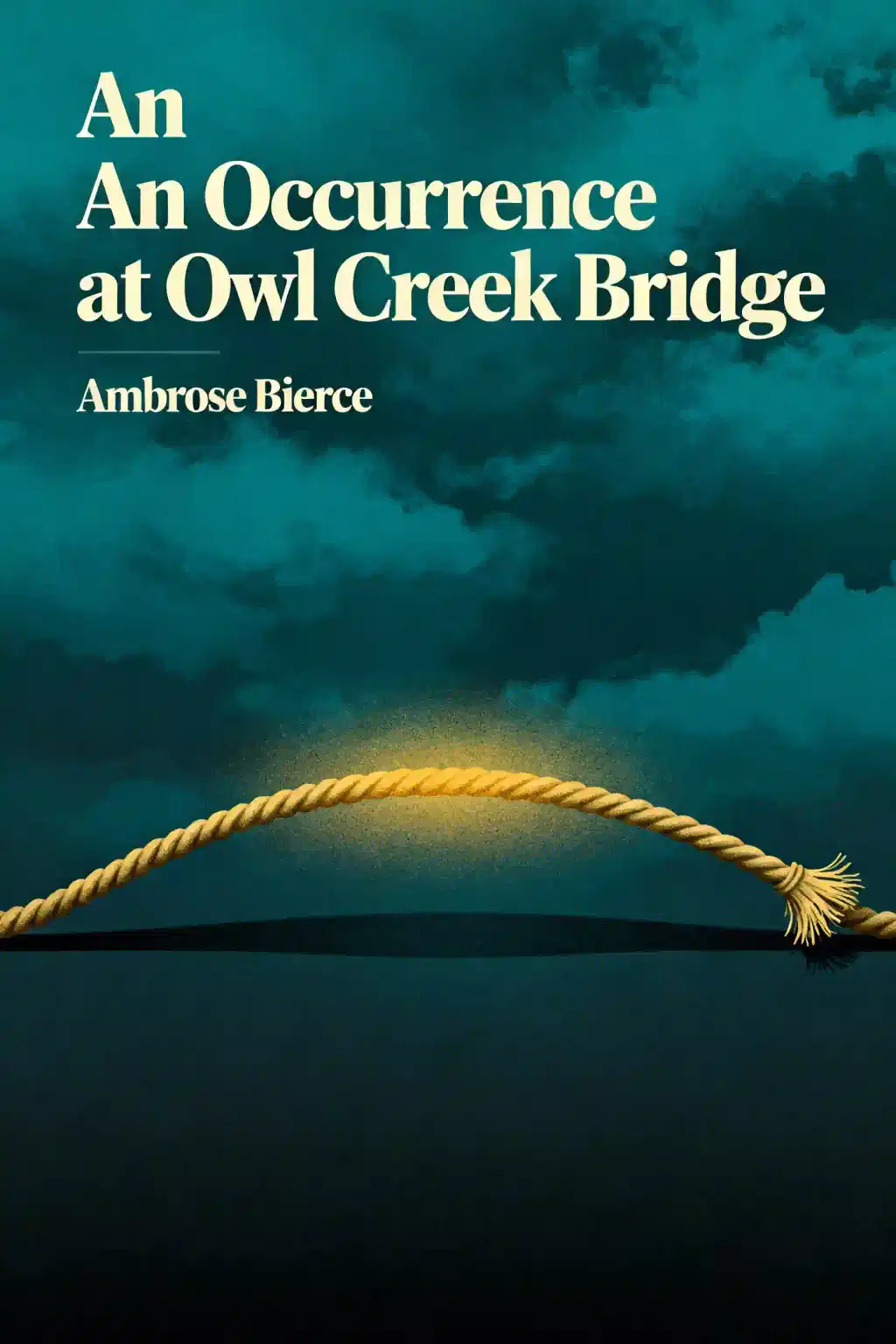
An Occurrence at Owl Creek Bridge by Ambrose Bierce Summary
Bierce's masterpiece of psychological suspense culminates in a twist that stunned audiences into winning an Oscar. This Civil War narrative's exploration of perception and reality so captivated Hitchcock that he adapted it for his iconic television series.
About the author
Ambrose Gwinnett Bierce (1842–1914?) was an American short story writer, journalist, and Civil War veteran who authored "An Occurrence at Owl Creek Bridge," one of the most widely anthologized tales in American literature. This psychological thriller masterfully blends his firsthand battlefield experience with themes of death, perception, and the supernatural—hallmarks of his darkly sardonic literary style.
Bierce served with distinction in the Union Army from 1861 to 1865, fighting in major battles including Shiloh and Chickamauga before being seriously wounded at Kennesaw Mountain. After the war, he became a prominent San Francisco journalist and literary critic, earning the nickname "Bitter Bierce" for his caustic wit.
His major fiction collections include "Tales of Soldiers and Civilians" (later retitled "In the Midst of Life"), which contains "An Occurrence at Owl Creek Bridge," and "Can Such Things Be?" He's also celebrated for "The Devil's Dictionary," a satirical lexicon named one of "The 100 Greatest Masterpieces of American Literature."
Bierce mysteriously disappeared in Mexico in 1913 during the revolution, leaving behind an enigmatic legacy that continues to fascinate readers worldwide.
FAQs About This Book
An Occurrence at Owl Creek Bridge by Ambrose Bierce is a Civil War short story about Peyton Farquhar, a Confederate sympathizer facing execution by hanging from an Alabama railroad bridge. The story follows his final moments as he imagines an elaborate escape back to his family, only to reveal through a twist ending that his entire journey home occurred in the seconds before the noose broke his neck. The narrative explores themes of time, death, and the psychology of dying through its innovative nonlinear structure.
Ambrose Bierce (1842-c.1914) wrote An Occurrence at Owl Creek Bridge in 1890 after serving as a Union soldier in the Civil War. Bierce became one of America's most influential journalists and pioneering realist fiction writers, earning the nickname "Bitter Bierce" for his satirical wit. His war experiences profoundly shaped his writing, and his work influenced major authors like Ernest Hemingway and Stephen Crane. Bierce mysteriously disappeared in Mexico in 1913, adding to his legendary status in American literature.
An Occurrence at Owl Creek Bridge appeals to readers interested in psychological fiction, Civil War literature, and masterfully crafted short stories with twist endings. Students of American literature will appreciate its innovative narrative structure and influence on modern storytelling techniques. The story is ideal for those who enjoy exploring themes of mortality, the nature of time, and the human mind's capacity for self-deception during extreme circumstances. Its brevity makes it accessible for anyone seeking impactful literary fiction without a lengthy time commitment.
An Occurrence at Owl Creek Bridge is absolutely worth reading—it's been described as "one of the most famous and frequently anthologized stories in American literature". The story's innovative twist ending revolutionized short fiction and continues to influence writers and filmmakers today. Bierce's masterful manipulation of time and perspective creates a powerful meditation on mortality and human psychology that remains relevant over 130 years after publication. At just a few pages long, it delivers profound insights into war, death, and consciousness with remarkable efficiency.
The ending of An Occurrence at Owl Creek Bridge reveals that Peyton Farquhar never actually escaped his execution. His entire journey—breaking free from the noose, swimming to safety, walking through the forest, and rushing toward his wife—was an elaborate fantasy that occurred in the brief moments between falling through the bridge and his death by hanging. The story concludes with the stark revelation: "His body swings from the noose at Owl Creek Bridge. He never escaped at all". This twist ending shocked readers and established a narrative technique widely imitated in literature and film.
The main theme of An Occurrence at Owl Creek Bridge is the fluid and subjective nature of time, especially during moments of extreme crisis. Bierce demonstrates how seconds can feel like hours when facing death, as Farquhar's elaborate imagined escape unfolds during the instant before his neck breaks. The story also explores the psychological mechanisms humans employ to deny mortality, showing how the mind creates comforting illusions when confronted with unbearable reality. Additional themes include the brutal impersonality of war and the gap between romantic idealism and harsh reality.
Peyton Farquhar is a wealthy Alabama plantation owner and slave holder who supports the Confederate cause during the Civil War. He was lured into a trap by a disguised Union scout who suggested he could burn down Owl Creek Bridge, which Union troops had seized and repaired. When Farquhar attempted to sabotage the bridge, he was captured and sentenced to death by hanging, as Union commanders had declared that any civilian caught interfering with the railroads would be summarily executed. His civilian status and romantic notions about war contrast sharply with the brutal military justice he faces.
An Occurrence at Owl Creek Bridge is considered a masterpiece for its innovative narrative structure and psychological depth. Bierce pioneered the use of nonlinear storytelling, moving seamlessly between present action, flashback, and imagined escape to create a disorienting experience that mirrors the protagonist's mental state. The story's twist ending was revolutionary for its time and has been endlessly imitated in literature and film. Bierce's precise, realistic depiction of Civil War execution procedures combined with his exploration of consciousness during dying moments creates a haunting meditation on mortality that transcends its historical setting.
Bierce manipulates time in An Occurrence at Owl Creek Bridge by stretching subjective moments while compressing objective reality. The story opens in present tense during the execution, flashes back to explain how Farquhar arrived there, then extends a few seconds of falling into an elaborate imagined journey spanning hours or days. Farquhar experiences heightened sensory awareness where his watch ticking sounds like "the stroke of a blacksmith's hammer upon the anvil", demonstrating how extreme stress distorts temporal perception. This technique creates dramatic irony and reinforces the theme that time is psychological rather than purely mechanical.
An Occurrence at Owl Creek Bridge exposes the brutal impersonality and cruel efficiency of war, stripping away romantic notions of heroism. The story shows how civilians like Farquhar, motivated by idealistic support for a cause, become casualties of calculated military strategy when a Union scout manipulates him into a fatal trap. The execution itself is depicted with clinical detachment—soldiers methodically prepare the hanging with the same routine as any other military operation. Bierce, drawing from his Civil War experience, presents war as a mechanism that grinds up individuals regardless of their status or intentions, replacing glory with cold bureaucratic death.
The bridge in An Occurrence at Owl Creek Bridge symbolizes the threshold between life and death, reality and illusion. As a literal structure spanning the creek, it represents the point of transition where Farquhar moves from existence to nonexistence. The bridge also symbolizes the gap between the Confederate South and Union North, making it a strategic military target that draws Farquhar into his fatal trap. Additionally, it represents the fragile boundary between civilian life and military violence—Farquhar's attempt to destroy it brings war's harsh reality crashing into his previously comfortable world as a planter.
Bierce's Civil War service profoundly shaped An Occurrence at Owl Creek Bridge, providing authentic details and psychological insight. He enlisted in the 9th Indiana Volunteers in 1861, fought in major battles including Shiloh and Chickamauga, and was seriously wounded at Kennesaw Mountain in 1864. This firsthand experience allowed him to depict military procedures, soldier behavior, and execution protocols with documentary precision. More importantly, Bierce's exposure to death and suffering gave him deep understanding of how the mind responds to mortal terror, enabling the story's psychologically realistic portrayal of Farquhar's final moments and desperate mental escape from unbearable reality.
Quick Summary Mode - Read or listen to An Occurrence at Owl Creek Bridge Summary in 8 Minutes
Break down key ideas from An Occurrence at Owl Creek Bridge into bite-sized takeaways to understand how innovative teams create, collaborate, and grow.
Flash Card Mode - Top 10 Insights from An Occurrence at Owl Creek Bridge in a Nutshell
Distill An Occurrence at Owl Creek Bridge into rapid-fire memory cues that highlight Pixar’s principles of candor, teamwork, and creative resilience.

Fun Mode - An Occurrence at Owl Creek Bridge Lessons Told Through 19-Min Stories
Experience An Occurrence at Owl Creek Bridge through vivid storytelling that turns Pixar’s innovation lessons into moments you’ll remember and apply.
Personalize Mode - Read or listen to An Occurrence at Owl Creek Bridge Summary in 0 Minutes
Ask anything, pick the voice, and co-create insights that truly resonate with you.

From Columbia University alumni built in San Francisco
See More Stories?

Get the An Occurrence at Owl Creek Bridge summary as a free PDF or EPUB. Print it or read offline anytime.












